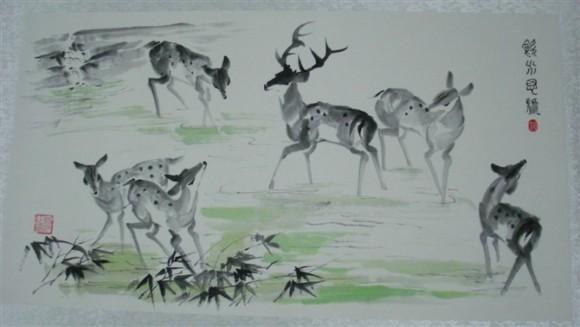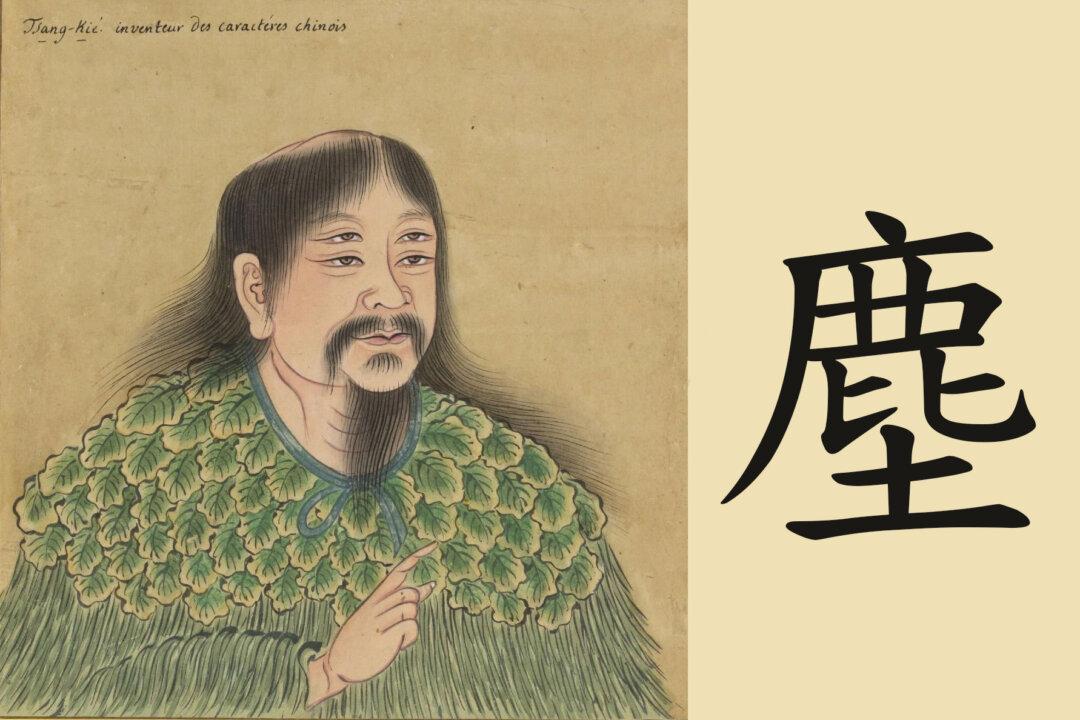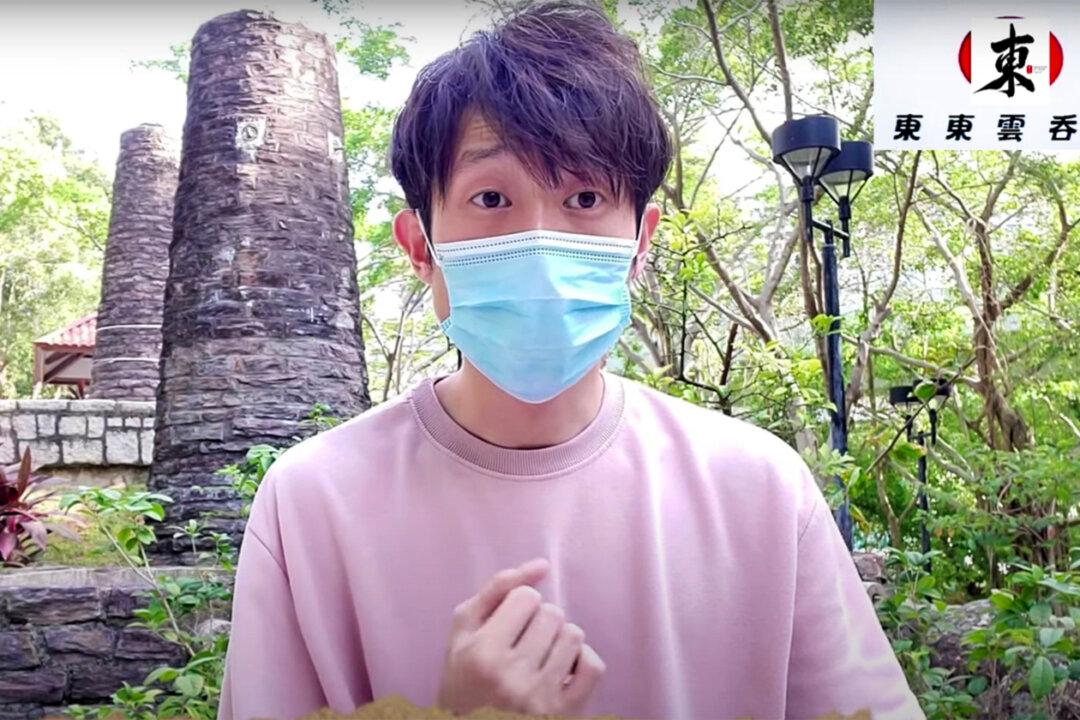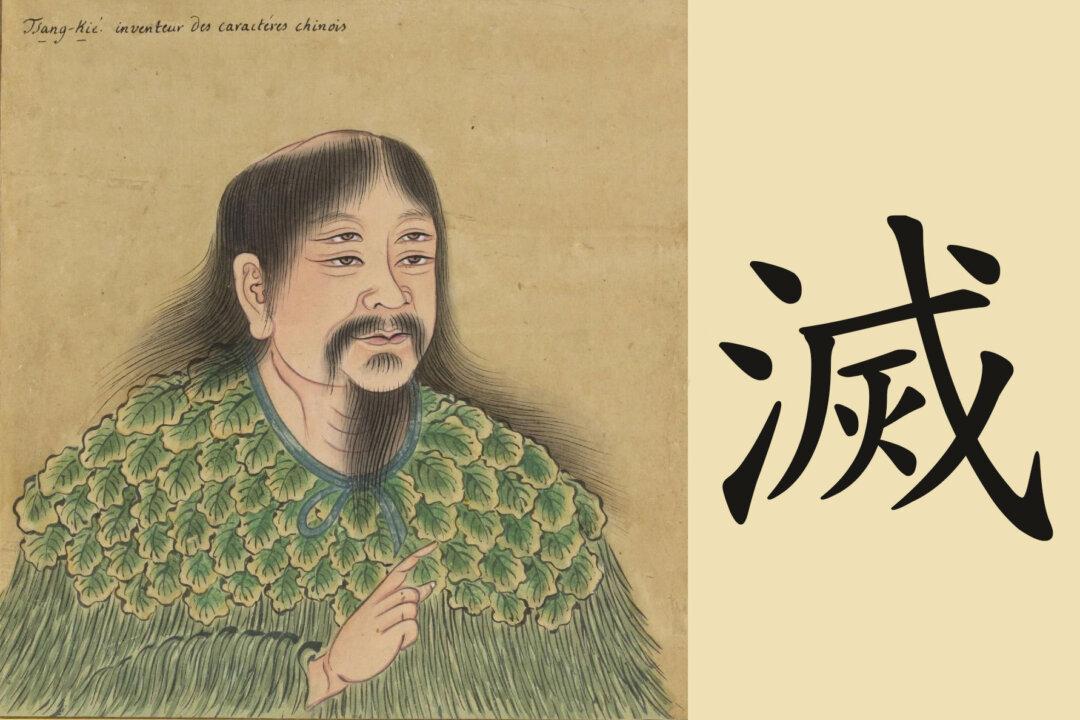The Chinese character 塵 (chen) refers to dust. It is formed of two parts, each a full character. The upper one is 鹿, a deer. In Bone Oracle Script, the earliest ancient Chinese writing, it was practically a full drawing of a deer, as below:

The lower part of the character 塵 is 土, meaning earth or soil.
塵 is called an associative compound character as it combines two already existing characters, deer and earth to show its meaning. It conjures up a mental picture of a group of deer running, causing dust to rise.

Chinese painting of a group of Deer. Courtesy of Qiu Yan




